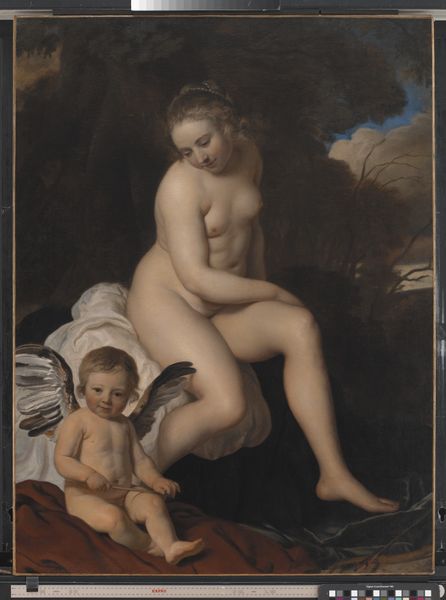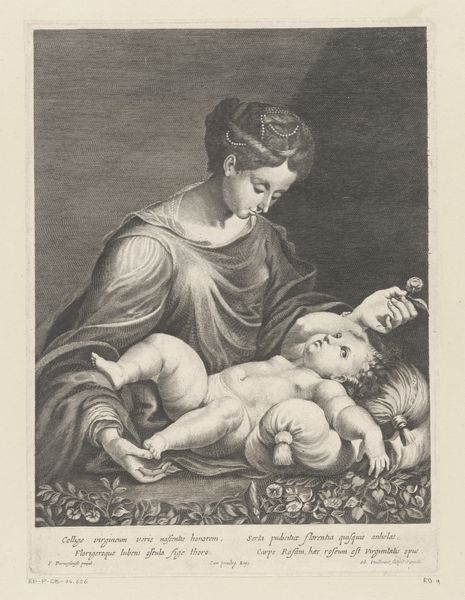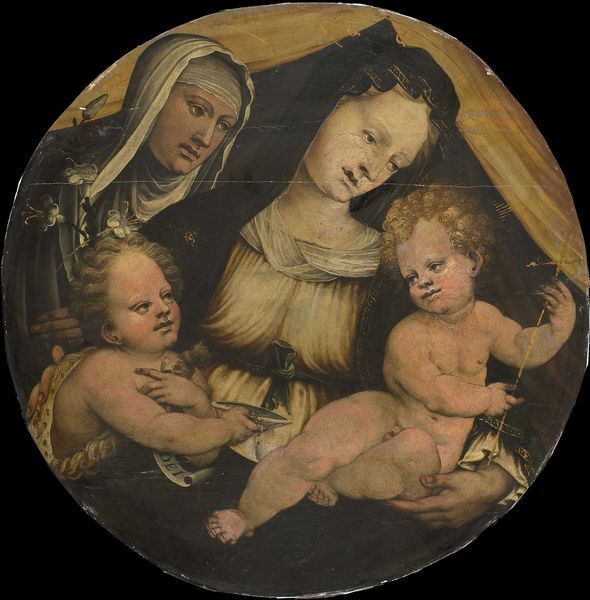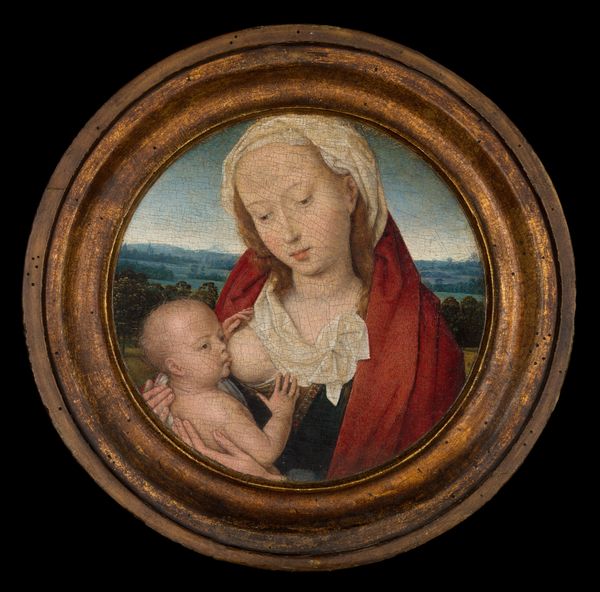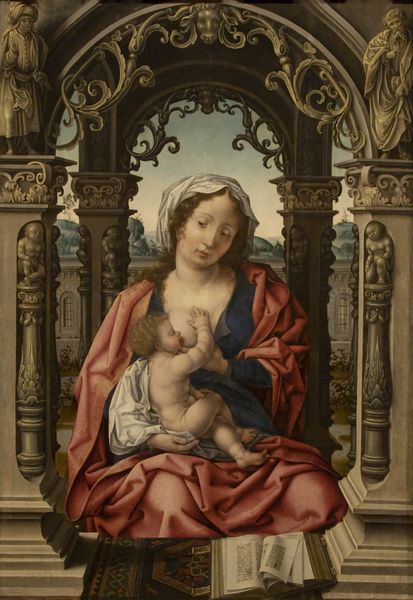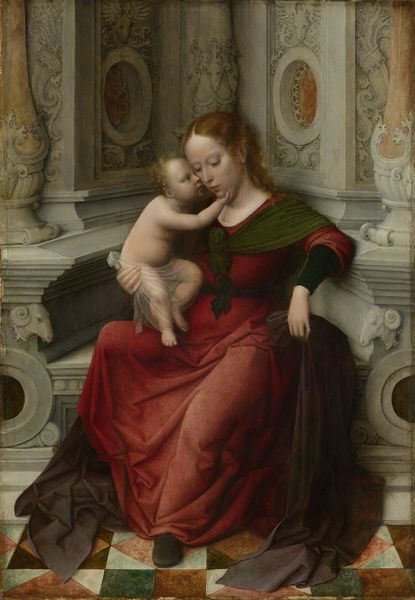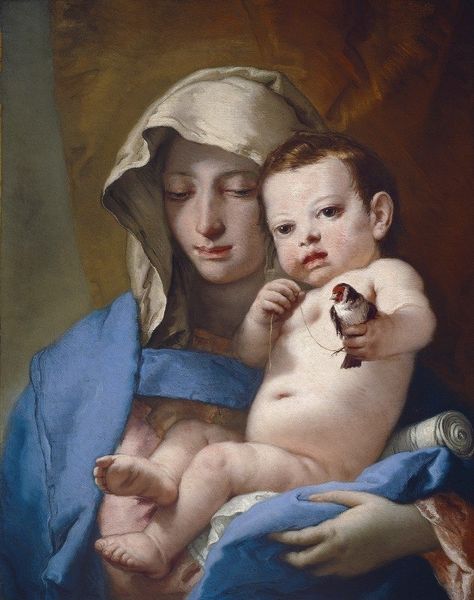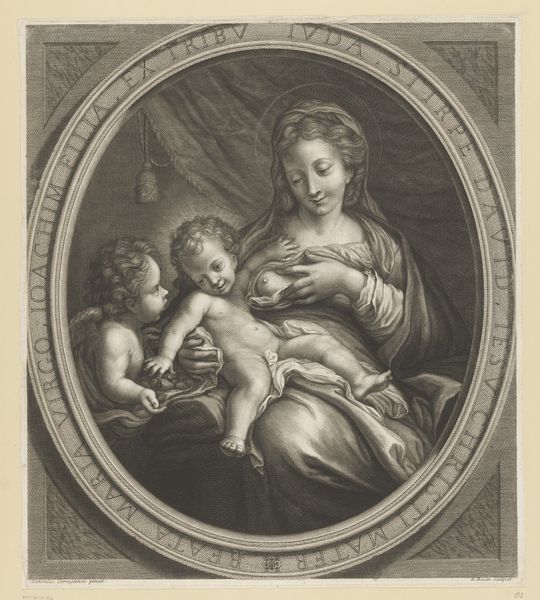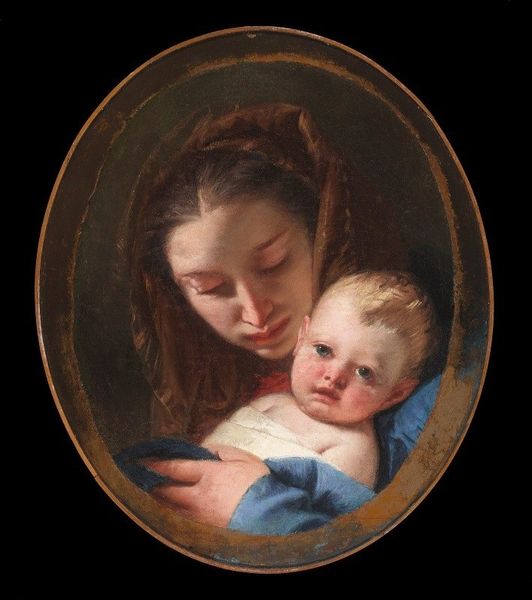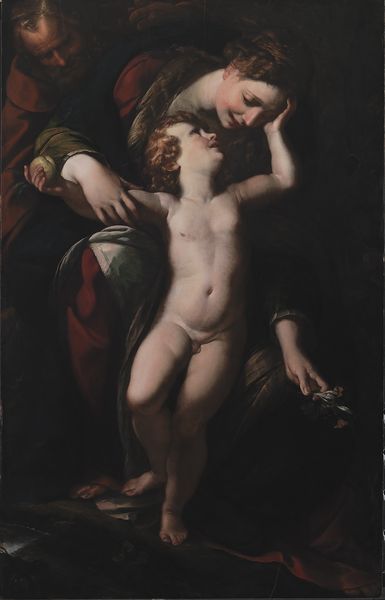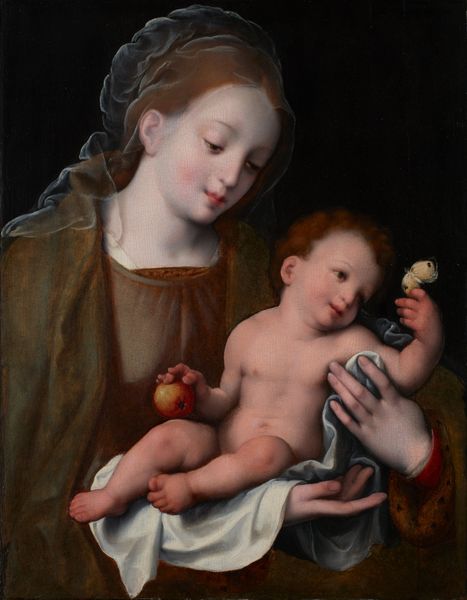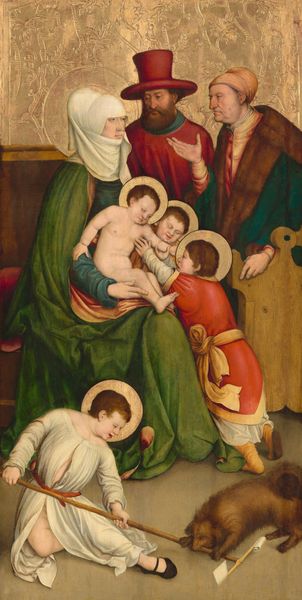
Dimensions: support: 305 x 305 mm
Copyright: CC-BY-NC-ND 4.0 DEED, Photo: Tate
Curator: Oh, it’s tenderness distilled, isn't it? Just look at "Mother and Child" by George Stubbs, found here at the Tate. It's a small piece, just about 30 centimeters square, but the feeling it evokes is enormous. Editor: My first thought goes to the materials, the almost porcelain smoothness—it makes me wonder about the specific pigments Stubbs would have sourced and the process he used to achieve this flawless finish. Curator: Indeed, there's such mastery of detail in the delicate folds of the sheet, the soft curve of the child's cheek. It is a window into the quiet moments of maternal love, almost sacred, wouldn't you say? Editor: Perhaps, but I see the labor involved in portraying such intimacy. Who was this mother? What was the social context of depicting her in such a way? I wonder about the conditions of the labor and the consumer market for pieces like this. Curator: Well, either way, it feels like a captured dream. Editor: A dream built on the back of material processes and social conventions, yes. Intriguing indeed.
Comments
tate 3 months ago
⋮
http://www.tate.org.uk/art/artworks/stubbs-mother-and-child-t00785
Join the conversation
Join millions of artists and users on Artera today and experience the ultimate creative platform.
tate 3 months ago
⋮
This piece is one of Stubbs's numerous experiments in painting with enamel. The sitter is thought to be Stubbs's mistress, Mary Spencer. She was his constant companion for forty years, although contemporary accounts describe her as a female relation or friend. The infant may be their son George Townley Stubbs, but as he was born in 1756 the picture could not have been painted from life. The work was in Mary Spencer's possession at the time of her death. She was probably also the model for the companion piece, Hope Nursing Love, 1774 (Victoria and Albert Museum, London). The catalogue of the sale of her estate says that Mother and Child is a version of a larger painting of the same subject, presumably the Mother with her Infant asleep, no.64 on the same day of the sale (1807).Stubbs's earliest known experiment in painting in enamel colours was the 1769 Horse Attacked by a Lion (Tate Gallery T01192). He subsequently produced numerous pieces in the medium. Stubbs spent two years studying the chemical changes to colours under high temperatures, and a further three years improving the support upon which the painting would be made. He used a copper plate support for this work, but was dissatisfied with the size limitations, and in the mid-1770s commissioned the master potter Josiah Wedgwood to produce special large ceramic tablets.Further reading:Bruce Tattersall, Stubbs & Wedgwood: Unique Alliance between Artist and Potter, exhibition catalogue, Tate Gallery, London 1974, pp.44-5, reproducedTerry RiggsDecember 1997
